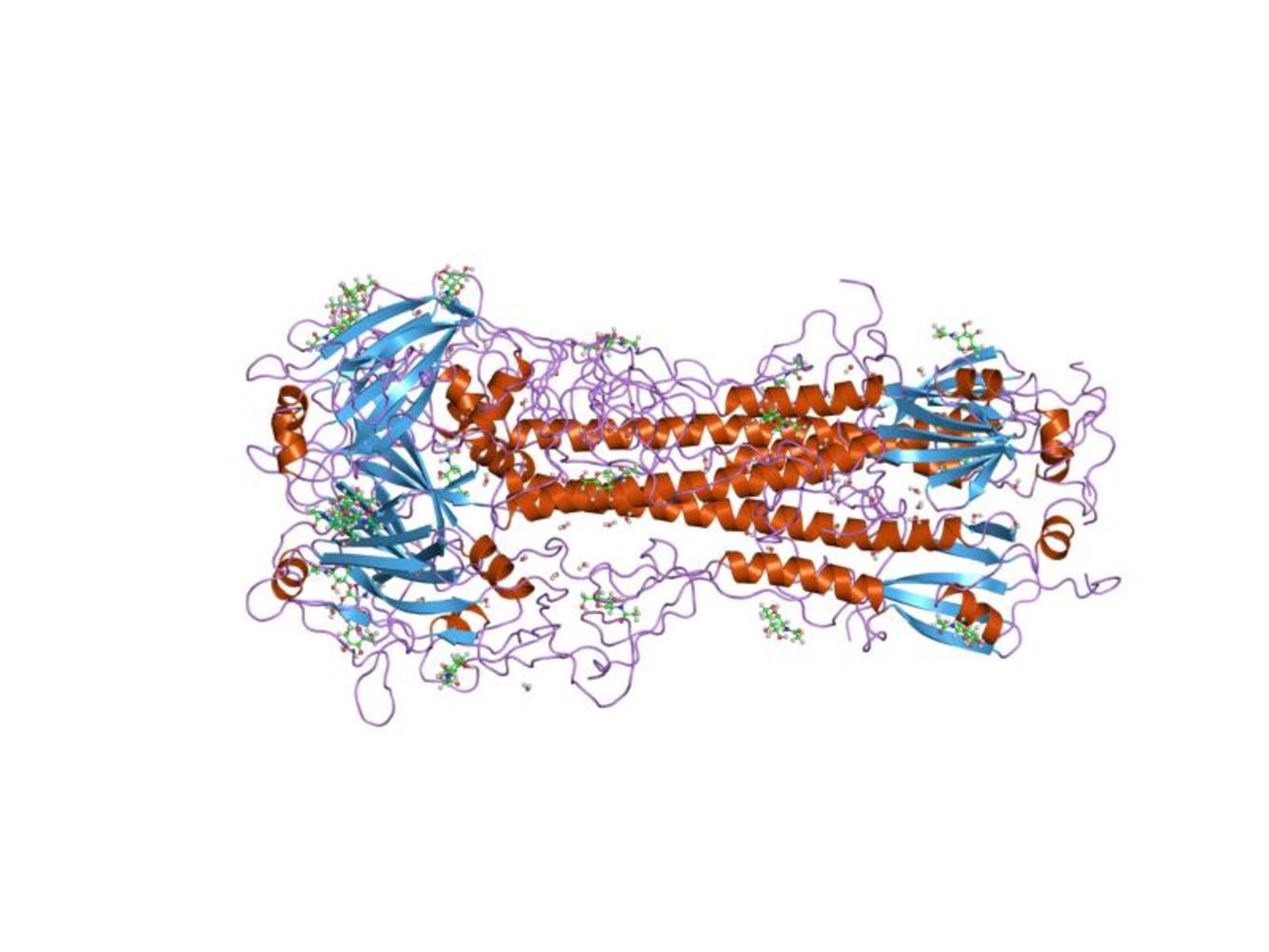Researchers in Seattle and Washington have solved an "enormous jigsaw puzzle" to design two novel proteins that bind to a protein found in influenza viruses, proving that computer designed proteins are feasible and could form the basis of new drugs and biosensors. They report on the work in the journal Science this week.
Protein-protein interactions are a common biochemical process, important in a great many biological systems, and are controlled by their molecular structure. For two proteins to bind, they need complimentary shapes that can fit together like a lock and key, with no overlap and little empty space.
 Sarel J. Fleishman at the University of Washington, along with colleagues in California, used cutting edge software and over 100,000 hours of parallel computing time to design new proteins that would bind to the tail of a common virus protein, Hemagglutinin, from the 1918 H1N1 'flu strain. This protein helps the virus to invade cells, and is found in many strains of influenza. Most natural antibodies bind to the variable head of the protein, leaving room for the virus to evolve immunity, but the tail is highly conserved across strains, making it an excellent target for attack.
Sarel J. Fleishman at the University of Washington, along with colleagues in California, used cutting edge software and over 100,000 hours of parallel computing time to design new proteins that would bind to the tail of a common virus protein, Hemagglutinin, from the 1918 H1N1 'flu strain. This protein helps the virus to invade cells, and is found in many strains of influenza. Most natural antibodies bind to the variable head of the protein, leaving room for the virus to evolve immunity, but the tail is highly conserved across strains, making it an excellent target for attack.
To design the protein, they first identified hot-spots of interaction on the virus protein. These are areas where hydrogen bonding and electrostatic interactions allow for low-energy bonding of complimentary structures. With a map of these hot-spots, they set about putting the jigsaw pieces together and designing a structure that would compliment, and therefore bind to, the protein.
Candidate proteins were tested using a highly efficient yeast-based assay, and two of the designed proteins, HB36 and HB80, were shown to bind well with the 1918 H1N1, as well as others strains of H1N1 and H5N1. One of the proteins, HB80, also inhibits protein changes important in infection.
Although by no means perfect, and there will be many hurdles to cross before designed proteins become useful medications, this is an excellent example of successful computer-aided-protein design, a technique that could be instrumental in future diagnostics and treatment.










Comments
Add a comment